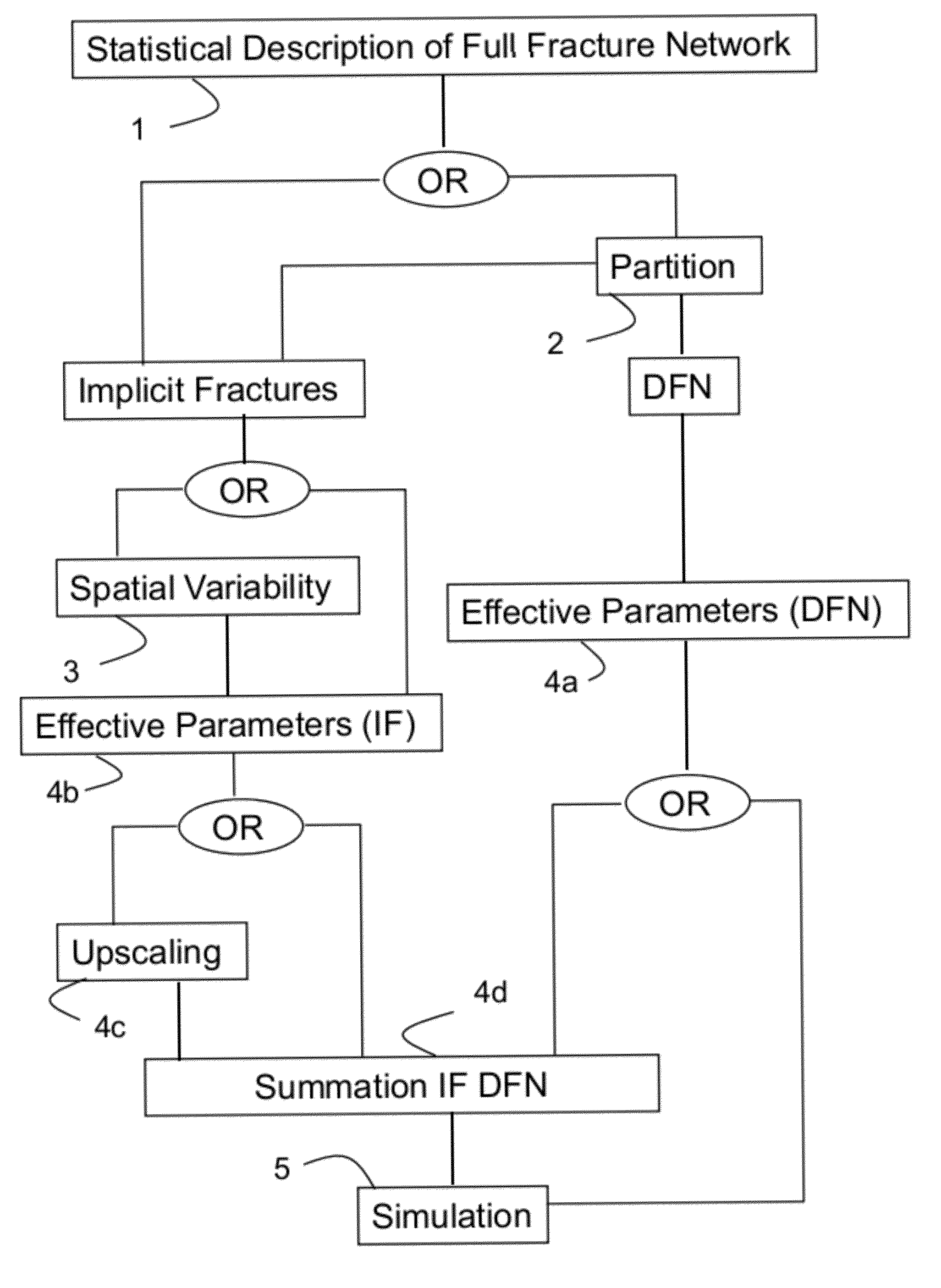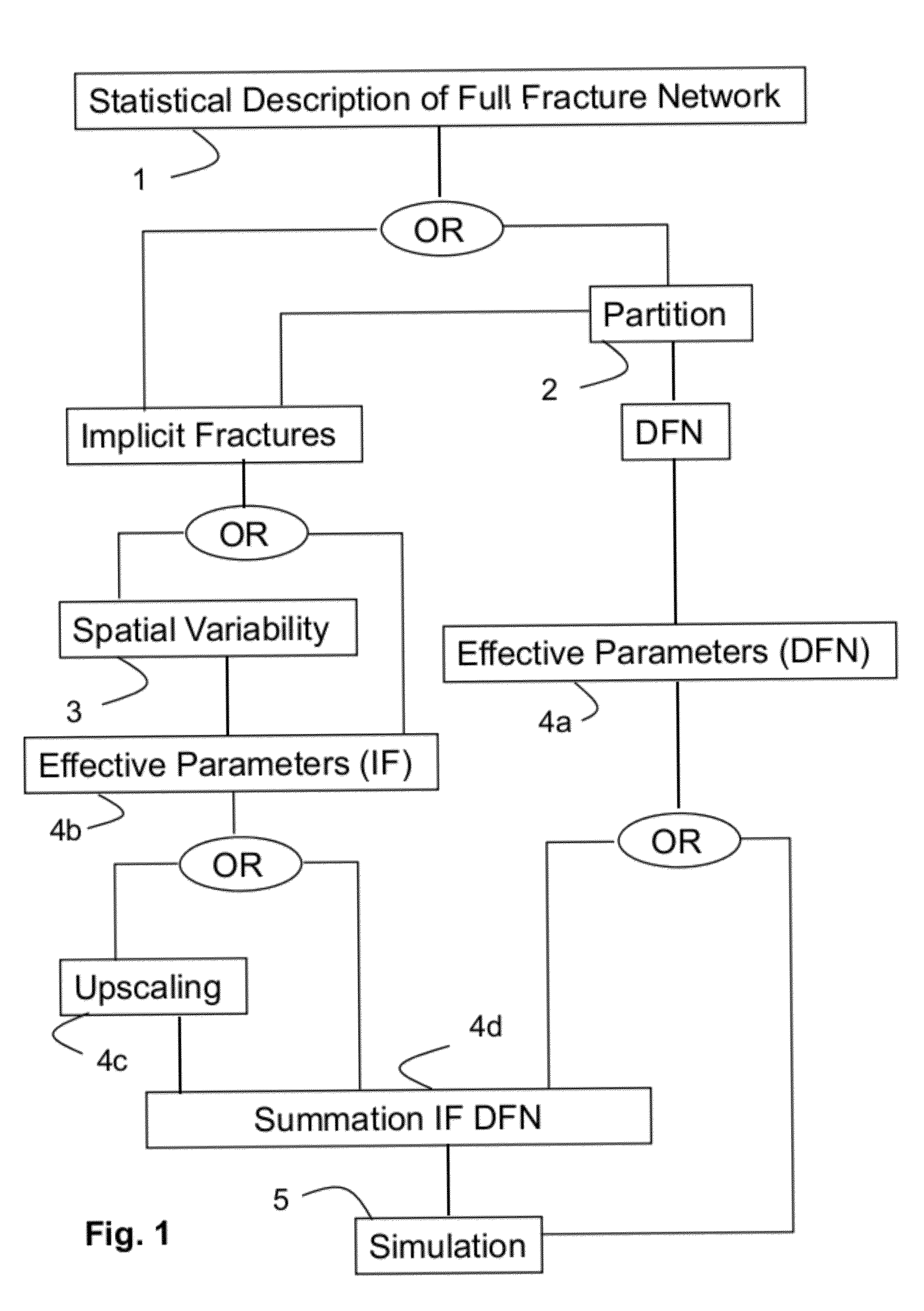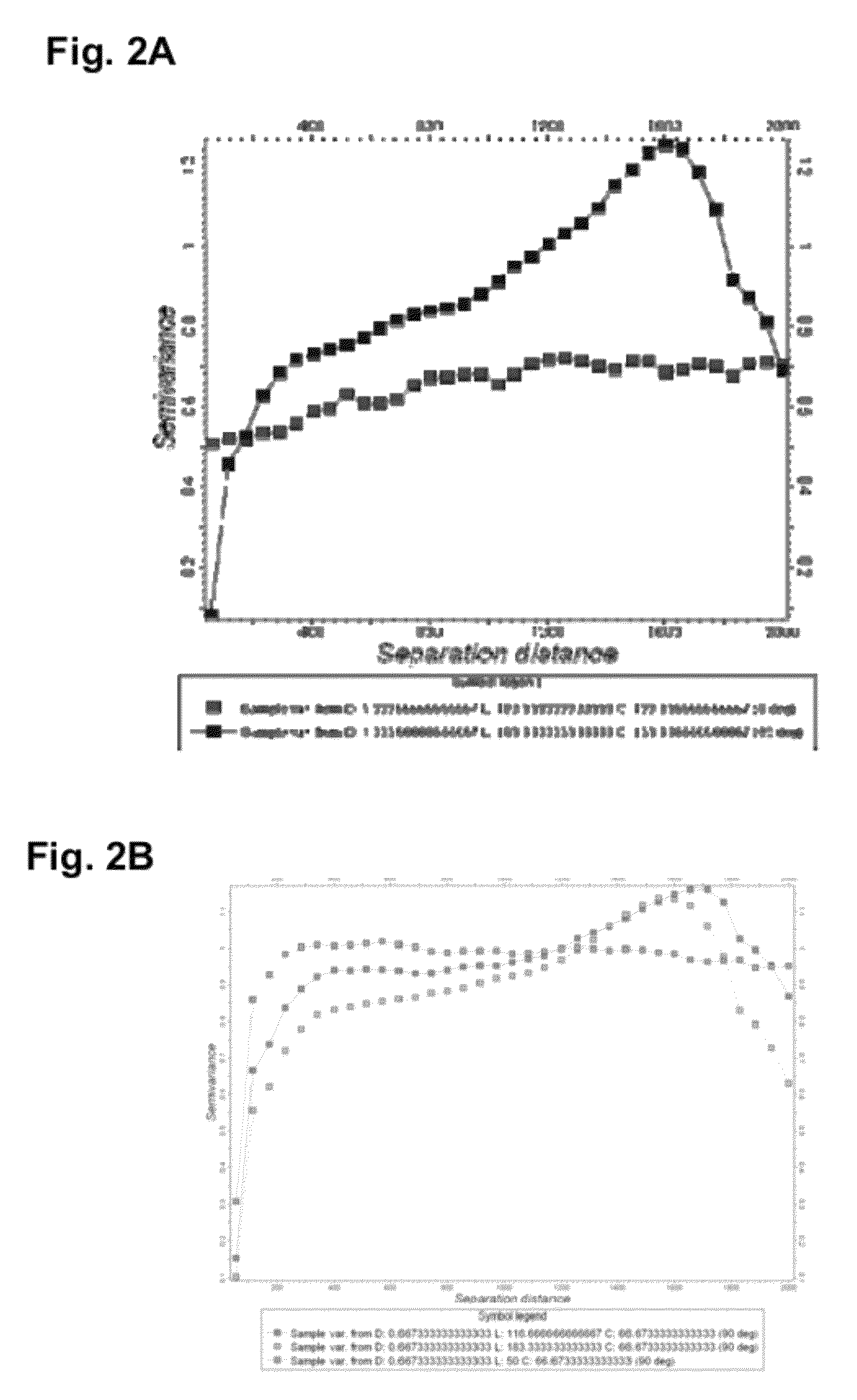Fracture network characterization method
a fracture network and fracture technology, applied in the field of fracture network characterization methods, can solve the problems of increasing the cost of computational resources, the memory required to store the dfn representation and the time required to compute the corresponding effective petrophysical properties, and the limited use of the fundamental reservoir model (representing only measured and interpreted data), so as to improve the representation of fractures, reduce the storage space required, and improve the calculation of petrophysical parameters
- Summary
- Abstract
- Description
- Claims
- Application Information
AI Technical Summary
Benefits of technology
Problems solved by technology
Method used
Image
Examples
Embodiment Construction
[0028]An example of the novel methods is described by the following steps following the flowchart of FIG. 1. In particular, the example includes as Step 1 the creation of a statistical description of the full fracture network. In the optional Step 2 of the example, the statistical description is partitioned into part which is modeled by a Discrete Fracture Network (DFN) and a part which is maintained as statistical description, referred to herein below as implicit fractures. The implicit fractures, i.e. the part kept as statistical description can then be optionally analyzed for heterogeneity and spatial variability of the fracture density. After this step 3, petrophysical parameters are derived from both the DFN part (Step 4a) and the implicit fractures (Step 4b).
[0029]In step 5, the petrophysical parameters derived for the DFN and the implicit fractures are shown to serve as input to the reservoir simulator either directly and separately or combined (Step 4d). Before being used as...
PUM
 Login to View More
Login to View More Abstract
Description
Claims
Application Information
 Login to View More
Login to View More - R&D
- Intellectual Property
- Life Sciences
- Materials
- Tech Scout
- Unparalleled Data Quality
- Higher Quality Content
- 60% Fewer Hallucinations
Browse by: Latest US Patents, China's latest patents, Technical Efficacy Thesaurus, Application Domain, Technology Topic, Popular Technical Reports.
© 2025 PatSnap. All rights reserved.Legal|Privacy policy|Modern Slavery Act Transparency Statement|Sitemap|About US| Contact US: help@patsnap.com



